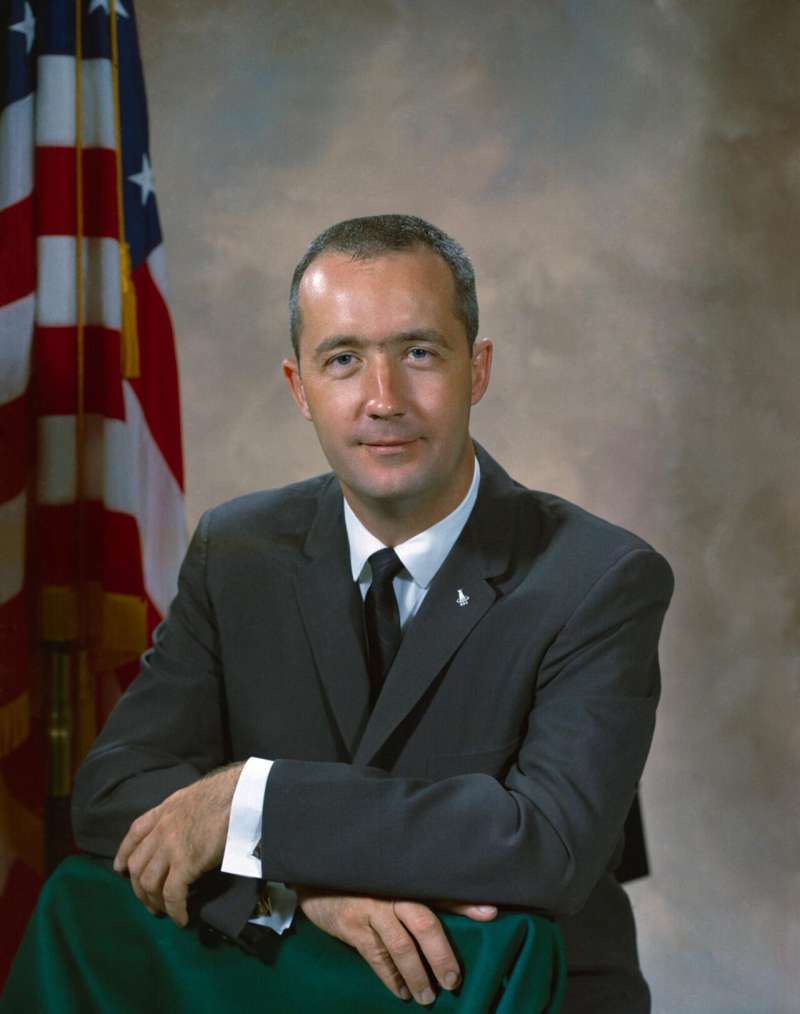Former NASA Astronaut James McDvitt, commander of the Gemini IV and Apollo 9 missions has died at the age of 93.

WASHINGTON: James A. McDivitt, former test pilot, Korean War Veteran, and commander of the Apollo 9 mission and Gemini IV, died Thursday at the age of 93 in his sleep, in Tucson, Arizona, according to NASA. McDivitt’s work on the Apollo 9 mission was crucial in assisting the Apollo 11 mission, which allowed the first humans to land on the moon. His work on Gemini IV also contributed to the nearly tripling of astronauts’ stay in space during that period in early space history, according to NASA’s statement.
McDivitt was born in Chicago and graduated from high school in Kalamazoo, Michigan. In 1959, he graduated first in his class from the University of Michigan with a bachelor’s degree in aeronautical engineering, according to the NASA statement. McDivitt joined the airforce at 20, flew close to 145 combat missions in Korea during the Korean War, and returned to Michigan to continue his education, where he graduated with an aeronautical engineering degree. He continued to become the first student in the Air Force’s Aerospace Research Pilot School.
In 1962, NASA selected McDivitt to be a part of its ‘second class of astronauts, titled ‘The New Nine’ and joined Neil Armstrong, Jim Lovell and Frank Borman among others.

“His contributions have inspired generations of students and his legacy of space exploration will live on as a pivotal part of our history,” said the University of Michigan, mourning his loss in a tweet
McDivitt is notable for his role as commander of 1965’s Gemini 4 Mission, where he and Ed White created history by venturing outside the spacecraft and thereby creating the first spacewalk.
“In the following years, it was a skill that allowed Apollo explorers to walk on the Moon and American astronauts and their partners from around the world to build the International Space Station,” NASA wrote in the statement,” said NASA
This two-man four-day mission in 1965 circled the globe 66 times and subsequently broke previous American records of 34 hours spent in space during the Mercury 9 Mission. 4 years later, McDivitt, was chosen to lead his second mission; Apollo 9. The Apollo 9 mission spanned 10 days and was launched on March 3, 1969, from NASA’s Kennedy Space Center, accompanied by Lunar Module Pilot Russell Schweickart and Command Module Pilot David Scott.
During his first flight in 1965, he reportedly saw “something out there”, describing a shape of a beer can floating outside the Gemini spaceship. Even though people used his statement as speculation towards the existence of UFOs, McDivitt would later figure it out as just a reflection of the bolts of the spacecraft on the window.
In 1972, McDivitt left the Air Force and NASA for a number of positions in the private sector, including President of Pullman Inc.’s Standard Division and a senior post with aerospace company Rockwell International, as the Senior Vice President, Government Operations and International at the time of his retirement, Washington, D.C and later retiring in 1995.
McDivitt was reportedly a member of a multitude of societies and organisations, including the Society of Experimental Test Pilots Institute of Aeronautics and Astronautics, Tau Beta Pi, Phi Kappa Phi, Atlantic Council on Foreign Diplomacy, and the Advisory Council-University of Michigan. He was also a Knight of Columbus. A global Catholic fraternal service order and represented the Order at the Vatican in 1967 at the Third World Congress for the Lay Apostolate.
McDivitt had logged in about 2,500 flight hours, a majority contributed by jet aircraft, by September 1962. McDivitt had also reportedly logged in more than 14 days in space before retiring from NASA in 1972.
He was awarded two NASA’s Distinguished Service Medals and the NASA Exceptional Service Medal.
Read More: BTS to go military












